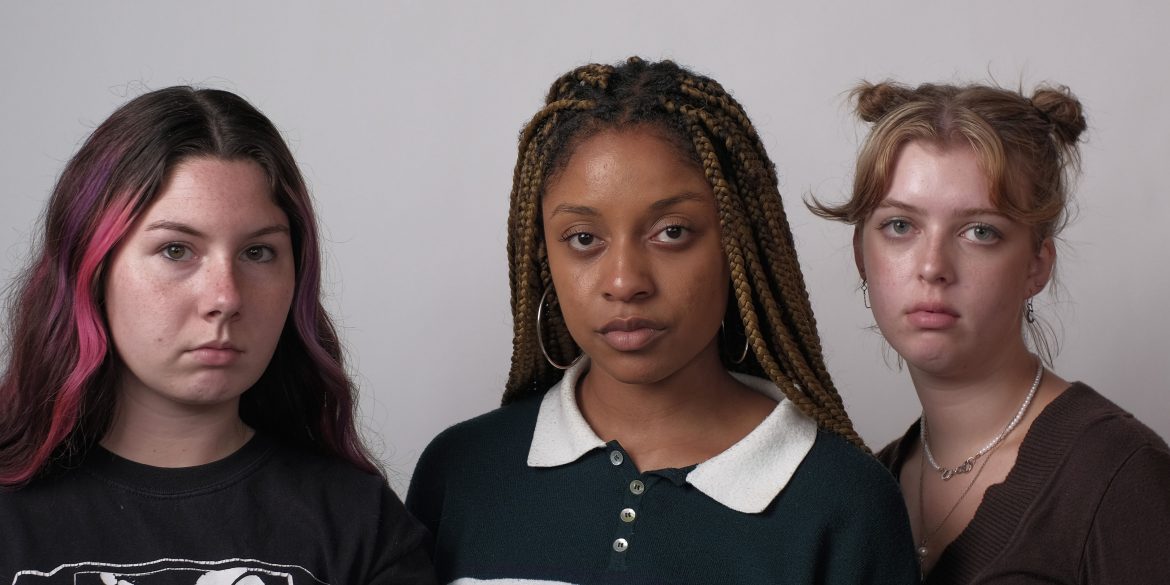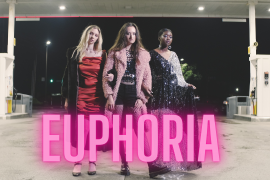The beauty and fashion industries are home to each individual’s personified insecurities. Think your skin is bad? There’s sure to be an ad campaign about skin inclusion, with only clear-faced individuals. Insecure about your pant size? Don’t worry, there’s a body positive initiative featuring only mid-sized models in skin tones of white… and one Black model, for inclusivity, of course.
Bottom line: you’ll never be good enough, and that’s okay.
The body positivity movement that came to the forefront in 2012 is outdated, Westernized, and not all that positive to begin with. The philosophy of the campaign was that “everybody is beautiful,” that you should love what you look like no matter what. It’s a mantra that creates a toxic mindset: you must love your body at all stages — which not everyone does.
The movement is also pointedly Western, with only countries like the US and the UK really adopting “body positive” mindsets. Places like France still run rampant with fatphobia and fat-shaming, while countries like the Philippines market skin lighteners to give young girls whiter complexions. Each country has their own idea of beauty, and a toxic notion of “accept yourself no matter what” doesn’t necessarily track for places with different beauty and body standards.
SKIN WHITENING: EAST & SOUTH ASIA
In many Asian countries, conventions of skincare and body sizes are vastly different than in the United States. The standards are thinner, crisper and whiter than America’s — literally.
In this region, skin whitening and lightening is key to young women’s beauty routines. Lightening products are more common than you may think, with bleaching ingredient hydroquinone being commonplace in many skincare products. In small doses, the agent can be used to treat hyperpigmentation and discoloration — in Asian countries, it’s used to lighten the skin.
In an article for Vogue online from Aug. 9, 2019, author Audrey Noble describes how, in these countries, darker skin is an indication of blue collar work that would mostly be done outside, causing the skin to darken. Since the 1500s, skin bleaching has been used to whiten skin to indicate status and wealth, which coincides with beauty.
Besides the skin damage that heavy bleaching products cause, these creams can also be damaging to internal organs and lead to kidney failure. Moreover, the concept of lightening skin for a more attractive appearance is colorism, something ingrained into many cultures that equates whiteness with beauty.
EUROCENTRIC: THE UNITED STATES, CANADA, AND NORTHERN EUROPE
Besides the traditional blonde hair, fair skin, thin physique ideal — the eurocentric beauty standards that emit from the US, Canada and most of Northern Europe are just as harmful as the other regions previously discussed.
The harm that the Eurocentric beauty standard has on white women is impactful, but these concepts of beauty are more hurtful to women of different races and ethnicities.
Seen especially in the Western world, the Eurocentric standard originates from colonization and the erasure of Native American and Black beauty. Feb. 6, 2019 NPR reports that the concept of beauty in the US, and likewise in Northern Europe and Canada, originates from white femininity — something unachievable to women of different races. From hair to skin to style, non-white women have a pressure to straighten their natural hair or present a certain — whiter — way to appear beautiful.
MIXED MESSAGED BEAUTY: SOUTH AMERICA
In South America, the Eurocentric beauty standard comes into play once again. However, this time it’s mixed.
Latin America has a stereotype of sexiness attached to its women. This ideal comes from Western media and stereotypes that encourage Latina’s to be overtly sexual to be considered beautiful. Similarly to East and South Asia, lighter skin is seen as more beautiful — something that connects back to the Eurocentric beauty standards of the Western world.
In Brazil specifically, the beauty standard is catered towards whiteness, with straight hair, small noses and other traditionally European traits being favored. The stereotype of sexiness is often combined with the Eurocentric traits to create a mixed message of beauty in South America, one that says to young women: you must be hot but young, curvy but thin, “exotic” but still have that traditional whiteness that is deemed acceptable.
AFRICAN BEAUTY: EUROCENTRIC EDITION
In a study from 2019, the National Communication Association reported that (surprise surprise), Eurocentric doesn’t mean only in Europe. The report disclosed how African magazines consistently highlight women with permed straight hair, lighter skin tones and Eurocentric features (thin physique, small noses, big eyes, etc.) instead of embracing Black beauty.
However, the Guardian reports that in West Africa natural hair is being highlighted as beautiful. Natural Black hair requires more care and precision than traditionally straight white hair, or even curly white hair. The Guardian article goes on to describe the importance of encouraging Black women to feel beautiful with their natural hair, as opposed to pressuring them to look Eurocentrically beautiful.
So, how does one go about accepting their body and their beauty while recognizing that not everyone is able to love theirs because of cultural conventions and personal insecurities? Body neutrality.
Unlike body positivity, body neutrality simply states that each person has a body, and that their body is doing its job to the best of its ability.
It’s not about thinking you’re beautiful no matter what. It’s about accepting that you are still worthy of good, even when you don’t feel beautiful.
This concept can cater to different cultural conventions. Each country, each region has a different idea of beauty — most of them playing off of a Eurocentric idea of what is traditionally white femininity. These toxic ideals of beauty go hand in hand with body positivity: if your culture tells you that you are not beautiful unless you look a certain way but you’re supposed to love your body no matter what, how is a woman supposed to find balance?
Body neutrality is a mindset that spans stereotype and convention. By accepting that your body is simply that — a body — you can slowly erase the notion that it needs to be beautiful at all times. Beauty is not about feeling confident 24/7. It’s not loving your body, skin, face, or hair all the time. Each individual’s idea of beauty starts with one thing: accepting that your body is the physical vessel, one that’s doing the best job it can at the moment, and that’s okay.




